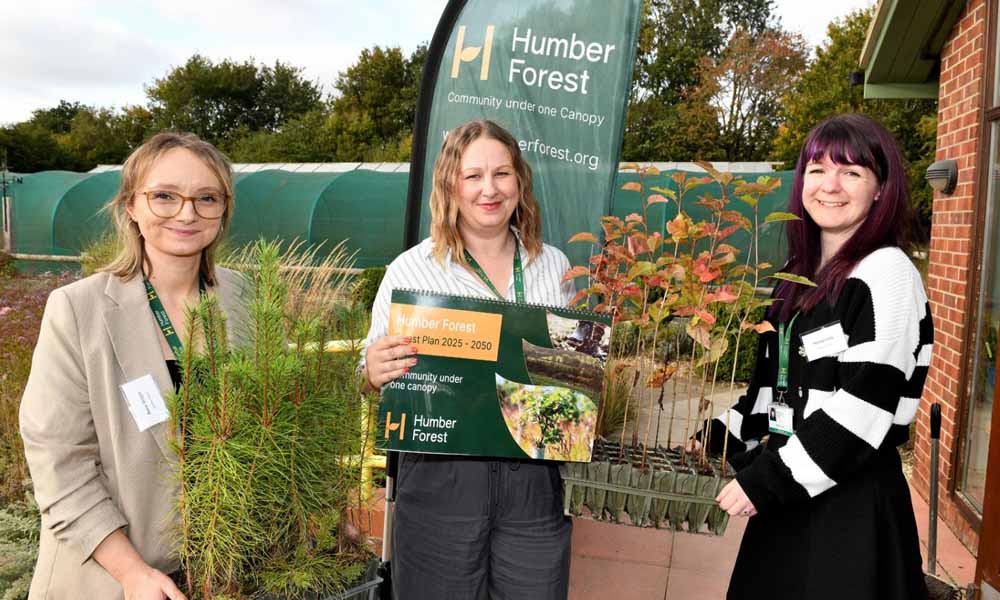EAST RIDING – A new 25-year plan to transform the landscape of East Yorkshire has been launched by Humber Forest, the community forest for the region.
The strategy aims to expand woodland and hedgerow planting across the East Riding, Hull and North Lincolnshire, guided by the principle of “the right tree, in the right place, for the right reason.”
Since 2020, Humber Forest has planted 292 hectares of woodland – equivalent to about 450 football pitches – along with 104 kilometres of new hedgerows.
The partnership, managed by East Riding of Yorkshire Council, forms part of the national Northern Forest network, stretching from Liverpool to the Yorkshire coast.
The new plan sets out how Humber Forest will work with farmers, landowners, councils, businesses and local communities to increase tree cover while protecting productive farmland and natural habitats.
Grants are available that can cover the full cost of planting and maintaining trees and hedgerows for up to 15 years, making the scheme accessible to a wide range of landowners.
Councillor Paul West, portfolio holder for environment and transport, said the long-term vision was not just about numbers but about shaping the landscape for future generations.
“We are already seeing the benefits of tree planting in improving biodiversity, air quality and flood resilience,” he said. “This strategy will ensure that the work continues at pace and on the right sites.”
Many of the trees planted through Humber Forest are grown at Mires Beck Nursery in North Cave, which supports adults with learning disabilities and autism.
The link between environmental and social benefits is seen as central to the project’s success.
The scheme forms part of the government’s wider ambition to create a new generation of community forests across England.
Yet the challenge will lie in maintaining long-term funding and ensuring that trees survive and thrive once established.
For landowners and farmers, Humber Forest offers a practical opportunity to make unproductive or flood-prone areas work for both nature and the local economy.
For communities, it offers the prospect of greener surroundings and stronger connections to the landscape.
The test will come not in the planting, but in the keeping.


